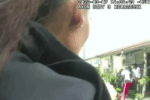Driving in San Diego can be a busy experience, with the bustling city streets, scenic coastal routes, and suburban areas all converging. As a driver, knowing who goes first in different traffic situations is essential to ensure safety for yourself and others on the road. The right of way rules are designed to prevent accidents and reduce confusion when drivers approach intersections or drive through various types of roads.
Understanding who has the right of way in different scenarios helps drivers make safer decisions, follow the law, and navigate San Diego’s roads without causing unnecessary traffic jams or accidents. In this article, we will go over the essential Right of Way rules in San Diego, explain when and why you should give the right of way, and provide tips to ensure you’re driving safely.
What is the “Right of Way”?
The right of way is a traffic rule that tells drivers who has priority to go first in specific road situations. This rule helps prevent confusion and accidents, especially in intersections or when merging lanes. The general principle is simple: if you have the right of way, other drivers must yield and let you go. On the other hand, if you don’t have the right of way, you should stop or slow down to allow the other driver to proceed safely.
However, the concept of who has the right of way may change based on the specific road scenario you encounter. Let’s break down some common driving situations in San Diego to help you better understand your responsibilities on the road.
Key Right of Way Rules in San Diego
1. At Intersections without Signs or Signals
In San Diego, just like in other parts of California, the general rule when approaching an intersection without signs or traffic signals is that the driver on the right has the right of way. This means if you’re driving on a road with no stop signs or traffic lights and another vehicle is approaching from the right, you must yield and let them go first.
Here’s an example: If you’re both approaching the intersection from different directions and neither of you has a stop sign or signal, the car on your right will go first. Always make sure to look out for other vehicles before entering the intersection and yield the right of way if needed.
2. At Stop Signs
At stop signs, drivers must come to a complete stop before proceeding. If multiple cars arrive at a stop sign at the same time, the vehicle on the right again has the right of way. If you arrive at a stop sign and another driver is already stopped, you must yield to them and let them go first.
However, if you’re making a left turn at a stop sign, you must yield to both oncoming vehicles and pedestrians. Turning left without yielding could be very dangerous, as the vehicles coming toward you might be unaware of your intent to turn.
3. At Traffic Lights
At traffic lights, the rules are straightforward: you must stop if the light is red. If the light is green, you have the right of way to proceed through the intersection. However, there are certain exceptions:
- Left Turns: If you’re making a left turn at a green light, you must yield to oncoming traffic, even if your light is green. Always check for pedestrians and other vehicles before turning.
- Right Turns on Red: In San Diego, you can make a right turn at a red light unless otherwise posted. However, you must first come to a complete stop and yield to pedestrians, cyclists, and other vehicles.
4. Pedestrian Crosswalks
Pedestrians always have the right of way at marked crosswalks in San Diego. This rule is non-negotiable and is enforced to protect pedestrians. If you’re driving near a crosswalk, you must stop and allow any pedestrians to cross safely, even if the light is green.
Remember that in some areas, especially near schools, pedestrians may be crossing the road more frequently, so always stay alert and prepared to stop. Failing to yield to pedestrians can result in a serious accident and legal penalties.
5. Merging onto Freeways and Highways
When merging onto a freeway or highway in San Diego, vehicles already on the freeway have the right of way. This means that drivers entering from an on-ramp must yield to traffic that is already on the road. However, vehicles on the freeway are still expected to adjust their speed and allow merging vehicles to safely enter the flow of traffic.
Be mindful of other drivers when you’re merging. If possible, try to match the speed of the vehicles already on the freeway to ease the transition. Never attempt to force your way into traffic; instead, slow down and wait for a safe gap.
6. Roundabouts
Roundabouts can sometimes be tricky to navigate, especially for drivers unfamiliar with them. The rule in San Diego is that vehicles inside the roundabout have the right of way. So, when you’re approaching a roundabout, you must yield to any vehicles already circulating.
When entering a roundabout, slow down and wait for a safe gap in traffic before proceeding. Also, always be sure to signal your intentions when exiting to alert other drivers around you.
7. Emergency Vehicles
Emergency vehicles, including police cars, fire trucks, and ambulances, always have the right of way in San Diego. If you hear sirens or see flashing lights, you must pull over to the right side of the road and stop. This applies to all lanes, and you must remain stopped until the emergency vehicle has passed.
It’s important to note that if you’re in heavy traffic, you should still try to clear a path for the emergency vehicle by moving to the right when possible. Avoid stopping in intersections or blocking their path.
8. School Buses
In San Diego, when a school bus has its red lights flashing and the stop arm extended, all drivers must stop regardless of which direction they are coming from. This rule is in place to protect children who are getting on or off the bus.
You must remain stopped until the bus retracts its stop arm and the red lights stop flashing. Failing to follow this rule can result in a significant fine and points on your driving record.
Special Considerations for San Diego Drivers
San Diego’s unique layout and busy streets mean that drivers face certain specific conditions that may affect their right of way:
- Heavy Traffic Areas: Areas like downtown San Diego, the Gaslamp Quarter, and near major tourist attractions can often have congested traffic. Always be patient and give others the right of way when necessary to prevent accidents and keep traffic flowing smoothly.
- Bicyclists and Motorcyclists: San Diego has a large cycling community, and many bike lanes are present along city streets. When driving near cyclists, give them the right of way when necessary and make sure to give them ample space when passing.
- Trolley Tracks: San Diego has a light rail system (the trolley), and drivers must yield to trolley vehicles when crossing tracks. Always watch for warning signals and be cautious when near trolley stations.
Tips for Safe Driving in San Diego
- Stay Alert: Pay attention to traffic signs, signals, and pedestrians at all times.
- Use Your Signals: Always signal when changing lanes or turning. This ensures other drivers are aware of your intentions.
- Yield When Necessary: Even if you technically have the right of way, always be willing to yield if it keeps traffic moving safely.
- Observe Speed Limits: Speeding increases the risk of accidents and makes it harder to react quickly to unexpected situations.
Conclusion
Understanding Right of Way rules in San Diego is essential for safe driving. Whether you’re navigating busy intersections, merging onto freeways, or simply making a turn, knowing who goes first ensures a smooth flow of traffic and helps avoid accidents.
By following the rules, staying alert, and respecting other drivers, you can contribute to making San Diego’s roads safer for everyone. Remember, the right of way is not just about following the law, but also about being a responsible and courteous driver.
Disclaimer – Our editorial team has thoroughly fact-checked this article to ensure its accuracy and eliminate any potential misinformation. We are dedicated to upholding the highest standards of integrity in our content.





More Stories
Right of Way Rules: Who Goes First on the Road in San Diego?
Right of Way Rules: Who Goes First on the Road in San Diego?
Right of Way Rules: Who Goes First on the Road in San Diego?